Facts About Ancient Egypt
The ancient Egyptian civilization has been an attractive exploration subject for hundreds of years. Here is a list of the most interesting facts about aspects of the ancient Egyptian life, religion, architecture, and more.
Ancient Egypt - When & Where It All Started
Chronology
- Ancient Egypt is divided into three separate periods: the Old Kingdom (2686-2134 BC), the Middle Kingdom (2040-1640 BC), and the New Kingdom (1552-1070 BC).
- The earliest settlers in the Nile River valley came into the region around 3,500 BC. This was called the Predynastic period because it was before any of the dynasties began.
- Hieroglyphs came onto the scene around 3,100 BC. This was around the same time when the first Egyptian pharaoh, Menes (aka King Narmer), unified Upper and Lower Egypt.
- The Step Pyramid of Djoser at Saqqara was built around 2,700 BC. It’s called the Step Pyramid because it wasn’t smoothed out, but consisted of steps.
Click here to learn more about The Timeline of Ancient Egypt

© Ed Yourdon - Djoser's Step Pyramid
Geography and Important Cities
- Ancient Egypt was split into two distinct regions: Upper Egypt and Lower Egypt. Upper Egypt represents the southern region while Lower Egypt represents the northern region. The regions are reflective of the flow of the Nile River (from south to north).
- The capital cities included Memphis (2950 BC-2180 BC), Thebes (2135 BC off and on until 1279 BC), Alexandria (332 BC to 641 A.D.), and Amarna (during the reign of Akhenaten, around 1332 BC).
- Other important cities included Elephantine, Crocodilopolis, Hermopolis, Kom Ombo, and Abydos.
Click here to learn more about Egyptian Geography

Saharan dust over Egypt
The Importance of the Nile River
- The Nile River runs south to north and empties into the Mediterranean Sea. It is the world’s longest river at 4,100 miles. Egypt is just one of the countries the river flows through.
- Egypt is built around the Nile River because it is the lifeblood for transporting goods and materials from one area to another.
- The Nile River provided fertile land to the ancient Egyptians so they could grow wheat, flax and papyrus, which was made into paper, sandals, rope, and baskets.
- A Nilometer, found in some temples, was used to measure the height of annual flooding of the Nile River.
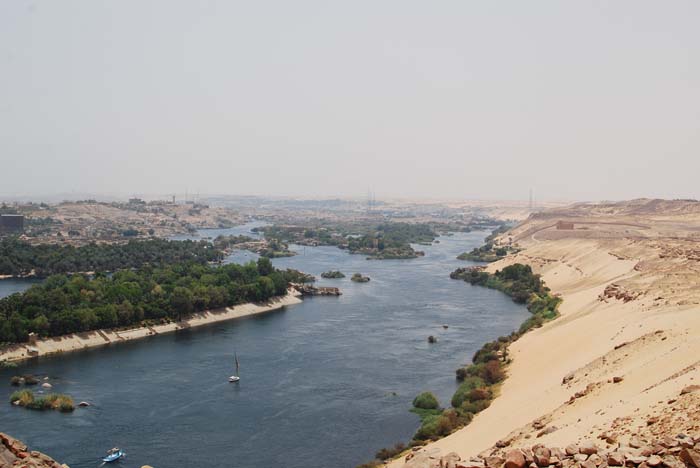
©Jiseon Shin - View of the Nile and the desert banks
Everyday Life for a Commoner in Ancient Egypt
- The people of ancient Egypt had many jobs such as craftspeople, scribes, priests and priestesses, farmers, and soldiers.
- The average girl married at around the age of 12.
- Daily bathing was common in the Nile River, where deadly hippopotami lived.
- Women could obtain high-ranking jobs like administrators, supervisors, and priestesses.
- The ancient Egyptians ate lamb, goat, vegetables, fruit, and a lot of bread. They also drank a lot of barley beer.
- Everyone wore jewelry and makeup (usually eye paint). Looking nice held extreme importance in ancient Egypt. They usually dressed in clothes made of white linen.
Click here to learn more about Life in Ancient Egypt
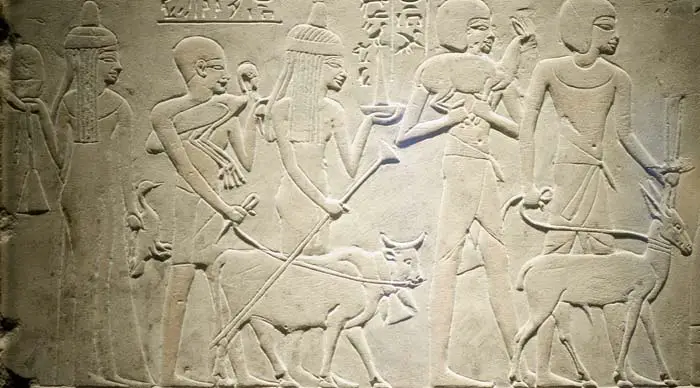
© rob koopman - Relief of ancient Egyptians in the tomb of Merymery
Technology & Inventions
- Hieroglyphics date back to as early as 3,300 BC and were used for the next consecutive 3,500 years.
- Ancient Egyptians had a great grasp of math and geometry. They used the geometry to accurately build pyramids, temples and other buildings. They used math in everyday business transactions.
- They invented door locks that used keys. The first keys used were up to two feet in length.
- Because the desert sand caused problems with their teeth, they invented toothpaste out of eggshells, ox hooves (ground up), ashes, and they invented the toothbrush.
- Ship building was an important part of their progress. They started with papyrus reeds in building small boats, and then later built larger boats and ships out of cedar wood.
- They invented the earliest known paper out of sheets of papyrus. The word “paper” actually comes from the word “papyrus.”
Click here to learn more about The Technology of Ancient Egypt

©Eisabeth.Skene - Writing on the Rosetta Stone
The Great Pharaohs of Ancient Egypt
- Hatshepsut, a rare female pharaoh, ruled from 1473-1458 BC. As the 5th pharaoh of the 18th dynasty, she reigned longer than any other female pharaoh. She is credited as being one of the most successful pharaohs of all time.
- Thutmose III, who took over the throne from his step mother (Hatshepsut) was known for his bravery after winning the Battle of Megiddo. He ruled from 1479 BC to 1425 BC.
- King Tut is famous because he was the youngest pharaoh in the history of Egypt. He took the throne at the age of only nine or ten, then tragically died at the age of 18. His tomb was discovered in 1922 and was significant because it had remained in nearly perfect condition since the king’s entombment. His reign lasted from 1334 BC to 1325 BC.
- The “Heretic” King, Akhenaten, ruled from 1379 BC to 1334 BC. His reign proved to be the only time in ancient Egyptian history when monotheism was practiced. He worshiped only one god, Aten, and started a religious revolution.
- Ramses II (Ramses the Great) ruled from 1279 BC to 1212 BC. He died at the age of 92 and won the Battle of Kadesh by defeating the Hittites in 1274 BC. Nefertari, his great royal consort (chief queen) was known for her remarkable beauty.
- Cleopatra VII was the last pharaoh of ancient Egypt. Her story is perhaps the best known of all the pharaohs because of her romantic entanglements and Egypt becoming a part of the Roman Empire after her death.
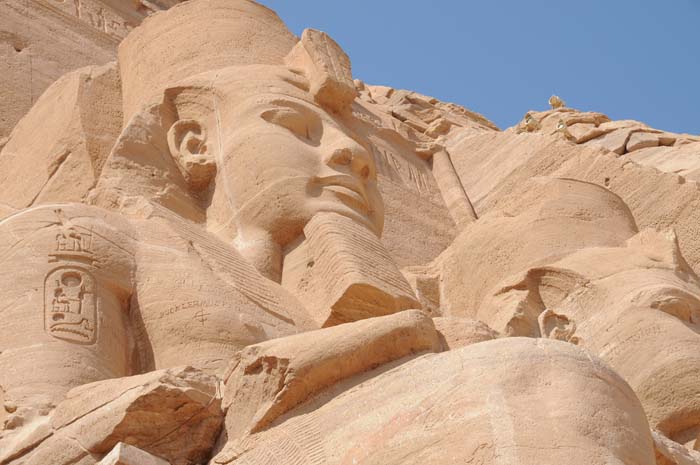
© josep salvia i boté - Statue of Ramses II
Click here to learn more about The Ancient Egyptian Pharaohs
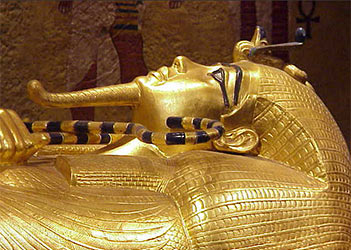
© Mary Harrsch - King Tut's Sarcophagus
Ancient Egyptian Architecture
Pyramids & Temples
- Temples were built to honor the gods and goddesses and were believed to be their homes. They were made of stone and built as places of worship for that particular god or goddess.
- Luxor Temple, located on the eastern bank of the Nile River in Thebes, is dedicated to Amun, Chrons, and Mut. The temple was started in 1,400 BC by Amenhotep III while additions were made centuries later by Ramesses II.
- The Great Sphinx is located on the Giza Plateau. The builder and date of creation are continually under debate, however it is generally accepted that the pharaoh Khafre built it around 2,500 BC. It is one of the oldest and largest monuments in the entire world.
- Abu Simbel is located in Upper Egypt on the west bank of Lake Nasser. It is carved from the side of the mountain around 1257 BC by Ramesses the Great and had to be relocated for its preservation in the 1960s.
- The Pyramids of Giza were built around 2,600 BC and were made up of Khufu’s Pyramid (the largest), Khafre’s Pyramid (the second largest), and Menkaure’s Pyramid (the smallest). Khufu’s pyramid stands 455 feet (139 meter) tall and is made up of over two million blocks of stone.
- Karnak is a temple located in Thebes and remains one of the largest places of worship in the world today. It was mainly built during the New Kingdom and is comprised of several temples as well as a 50,000 square foot Hypostyle hall.
- The Step Pyramid of Djoser at Saqqara holds the grand distinction of being the first pyramid ever built in ancient Egypt. Imhotep, the pharaoh’s Vizier, constructed the 204 foot (62 meter) tall pyramid in the 27th century BC.
- The Valley of the Kings holds 60 tombs, some as large as 100 and more chambers and some as small as a single underground room.
Click here to learn more about The Ancient Egyptian Architecture
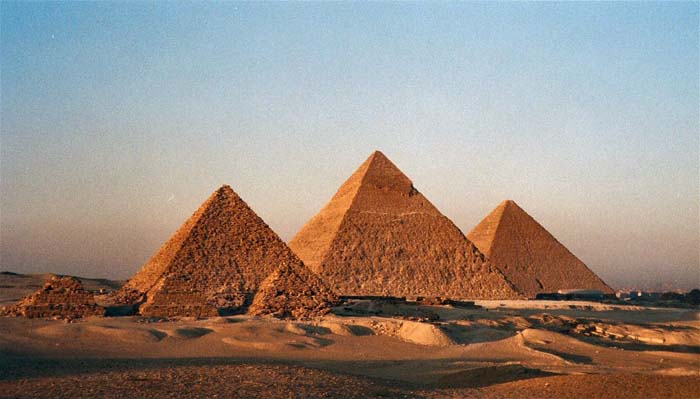
© Bruno Girin - The pyramids of Khufu, Khafre and Menkaure
Religion
Gods & Goddesses the Ancient Egyptians Loved and Feared
- The ancient Egyptians worshiped over 2,000 gods and goddesses. Many had the same characteristics and were called by different names in different parts of the country.
- It was believed that each pharaoh was the “living Horus”. Horus was represented as having the head of a hawk and was the pharaoh’s personal protector.
- Amun was the King of the Gods. As the most powerful of all of the gods, he had the head of a ram. He became even more powerful when he combined with the sun god, Ra, to become Amun Ra or Amun Re.
- Aten was one form of Ra and became King of the Gods during the time when Akhenaten (the Heretic King) ruled Egypt. Akhenaten believed Aten to be the only true god.
- Osiris, the husband and brother of Isis, appeared as a mummified man and was the God of the dead, resurrection and fertility. He also ruled the underworld.
- Isis was a protector goddess and was wife/sister to Osiris and mother to Horus. She wore a pair of cow horns and a sun disk.
- Geb was God of the Earth. He was also the brother and husband of Nut, the sky goddess. Geb was represented as a man with a goose on his head.
- Hathor was the Goddess of love and joy and a protector goddess. She had the ears of a cow and wore a sun disk with a headdress of horns.
- Sobek protected the king. He was represented as having the head of a crocodile, or took the form of a crocodile. The ancient Egyptians feared and loved him.
- Connected with the moon, Thoth was often represented as a baboon. The ancient Egyptians believed Thoth gave them hieroglyphics as he was the God of writing and knowledge.
- Nut arched across the sky as she was the Sky Goddess. Her body created a beautiful canopy of stars over the earth. She was sister/wife to Geb and birthed Osiris, Isis, Seth, and Nephthys.
Click here to learn more about The Gods of Ancient Egypt
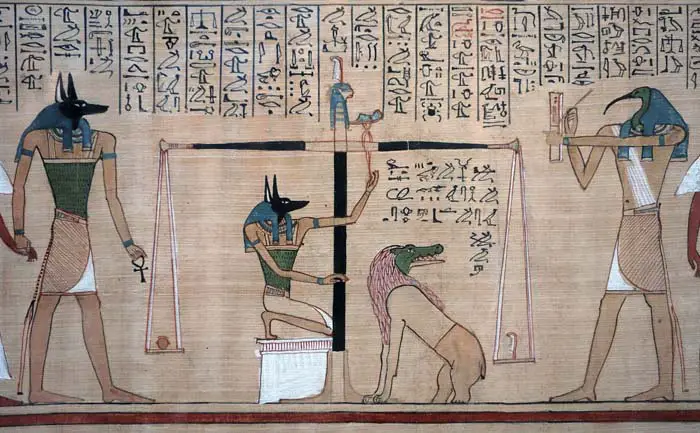
© Steven Zucker - Depictions of Gods in Hunefer's Book of the Dead
Creation Myths
- There were different creation myths for different cities and each city relied more heavily on one god over another for the creation of the world.
- The different creation myths were associated with Thebes, Hermopolis, Memphis, and Heliopolis.
- Common elements in all of the ancient Egyptian creation myths included Nu being the waters of chaos where life had arisen, the sun, and the "cosmic egg."
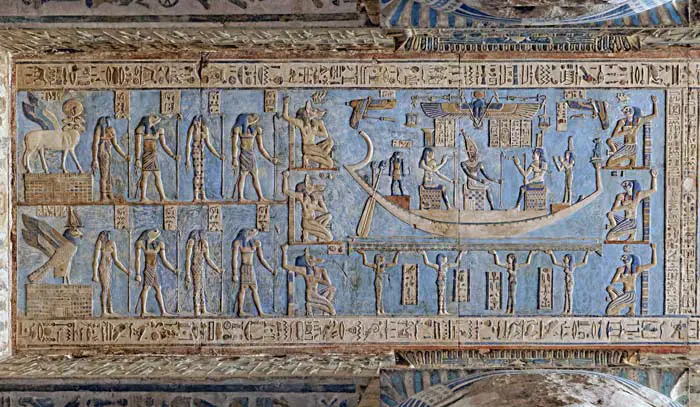
© kairoinfo4u - Ceiling at Dendera Temple, describing the creation of the world
Festivals
- The Feast of Wagy was a festival of the dead. It took place at the beginning of the Egyptian new year and honored Osiris. Ancient Egyptians often honored the dead with offerings of food, drink, and prayer during the festival.
- The Feast of Sokar honored Sokar, the falcon deity. This planting festival took place before the ancient Egyptians sowed their crops. To begin the festival, the pharaoh performed a ritual-like hoeing and a processional was held with Sokar’s statue on the Henu barque.
- The Feast of Min started with a ceremonial cutting of the first sheaf of grain. This grain was offered to Min, after which the public celebrated fertility and abundance in their crops and livestock.
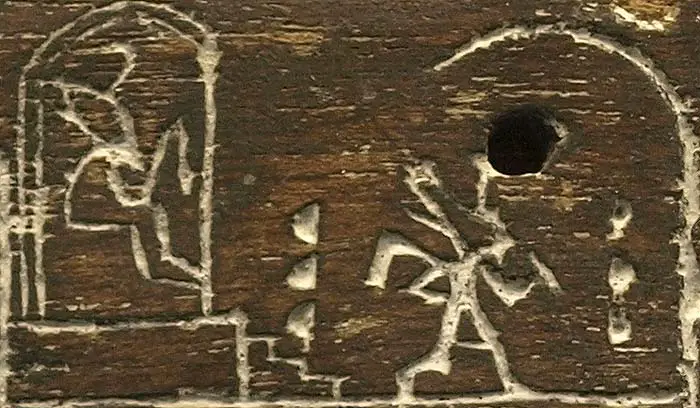
© Captmondo - Fragment of Reliefs describing the Sed Festival
Funeral Rituals
- Mummification involved embalming the body after removing all of the internal organs except for the heart. The organs were mummified and placed in Canopic jars alongside the individual’s sarcophagus. The brain was discarded as the ancients believed it had no relative significance. They believed the heart was the seat of reason and emotion and so it stayed inside the body. Packed in natron, the body was left out to dry for 40-50 days. Afterward, the body was wrapped tightly in linen.
- Magic rituals were performed after mummification to ensure that the person’s soul would enter the afterlife. By opening the mummy’s mouth, the priest re-animated the person by saying a spell. After that, he touched the body or their sarcophagus with a copper blade. This further ensured that the person could speak, move, and breathe in the afterlife. This was referred to as the Opening of the Mouth ceremony.

© Priscilla Jordão - Egyptian Mummy
The Afterlife
- To meet the Gates of Yaru (the afterlife) the deceased had to overcome many dangers including monsters, snakes, and boiling lakes. Spells could be cast to help them get through these perils, and these spells were written out and left in or near the sarcophagus.
- The deceased had to pass the Hall of Two Truths which involved the weighing of the heart. The heart was weighed against the Feather of Truth by Thoth, Anubis, and Osiris. If the deceased passed the test, they could enter the afterlife. If they didn't, their heart was eaten by Ammit, a horrifying monster.
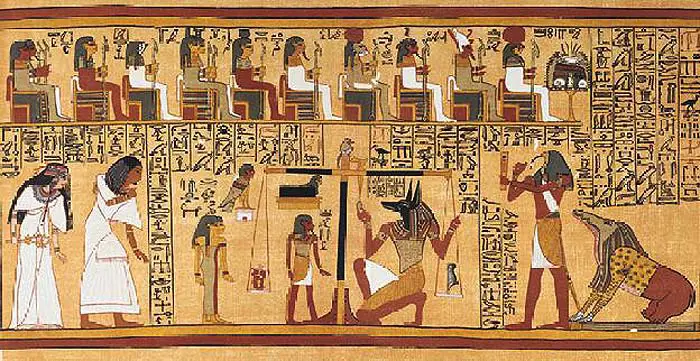
Depiction of the Weighing of the Heart
Sacred Texts
- The Egyptian Book of the Dead – This book describes the deceased person’s journey into the afterlife.
- The Pyramid Texts – These are funerary inscriptions taken from the earliest pyramids.
- The Narmer Palette – Also called the Great Hierakonpolis Pallete. The palette dates back to 31st century BC. It is believed by historians to portray the unification of Upper and Lower Egypt by King Narmer.
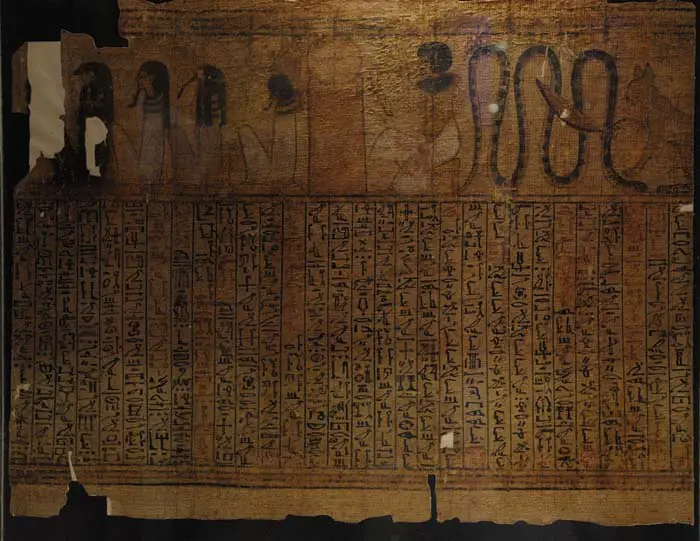
© rob koopman - Book of the Dead extract
